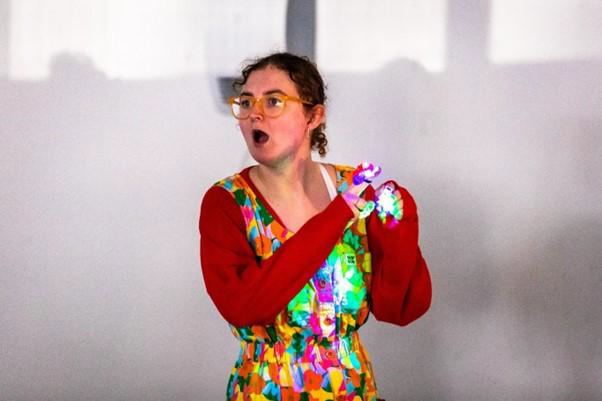A few years ago, a news story caught the headlines. A group of deaf astronomers had teamed up with an astrophysicist working at the University of Leeds for a unique project - inventing new sign language for terms belonging to outer space. NASA’s Curiosity rover had taken a selfie on Mars, spacecraft were landing on the far side of the Moon and the Hubble telescope was taking photos of galaxies hundreds of millions of lightyears away - but there was only just a sign for ‘black hole’.
This gap between humanities’ interstellar knowledge and its ability to share that equally on earth was striking. The Leeds project was created in response to concerns that this lack of specific signs for more novel discoveries was creating a barrier to Deaf and deaf people accessing astrophysics.
From this, the initial idea for Maria in the Stars was born. The children’s show follows Maria, a Deaf astronaut and the granddaughter of an engineer who sent a Rover - based on the Mars Opportunity rover - to space, only to lose contact with it and spend years wondering about its whereabouts. Spurred on by the reward of a gold medal proffered by the Queen to whoever can find signs of life on Mars, Maria travels to the Red Planet, reunites with her Grandmother’s rover, and makes a discovery so exciting that the sign language for it doesn’t exist yet!
The show is interactive, and so the young audience help Maria to construct a new sign and make the treacherous journey back home. At the core of the show is a tension that lies at the heart of much real-world scientific exploration - that between out-of-this-world ambition, and the risk of leaving people behind. As well as an intention to widen access to theatre, the show is born of a fervent mission to draw together STEM subjects with the arts.
From the early years of school, children are often encouraged towards either one or the other and girls, especially, may often feel excluded from STEM subjects. As a fast-moving space race, the show encourages children to recognise the excitement, adventure and poetry that can be found within space science. The show nevertheless relishes scientific detail - we emphasise that the sign for Mars is a closed fist circled by two fingers, representing Mars’ two moons; Maria’s discovery reflects likely real-world revelations, and our imagined Martian landscape references the canyons, dust storms and fierce temperatures that are real obstacles awaiting astronauts of the future. Maria is a Deaf, female role model - squarely a demographic underrepresented in outer space, which is disproportionately populated by men (and, who knows, maybe a few aliens).
Played with wit by Deaf Scottish actor Amy Helena, we hope Maria’s fierce, warm-hearted character and the thrilling adventure she goes on will inspire young audience members - especially those who don’t normally see people like them in spacesuits - to become the cosmic explorers of the
future.
See the website for more details: http://www.mariagoestospace.com/
Maria in the Stars is at Canada Water Theatre (18th Feb), MAC Birmingham (20th Feb) and Derby Theatre (22nd Feb).
Tickets for Canada Water Theatre here:
https://www.theatrepeckham.co.uk/show/maria-in-the-stars/
Tickets for MAC Birmingham here:
https://macbirmingham.co.uk/book/instance/1785549
Derby tickets here:
https://derbytheatre.co.uk/event/maria-in-the-stars/
